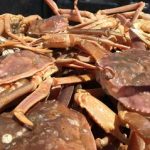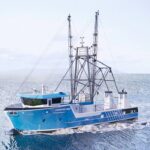Tag Archives: Long Island Sound
Long Island Sound Lost Its Lobster Fishery. Is Cape Cod Bay Next?
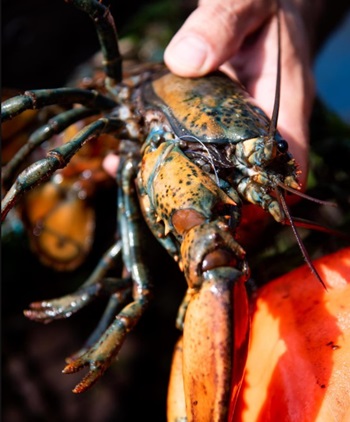 Catches in Cape Cod Bay were good for many years, and prices were good, too. But lobstermen here started worrying in the late 1990s when the fishery collapsed in Long Island Sound. And that worry hasn’t gone away, because environmental changes here resemble those that were affecting Long Island Sound back then. In the aftermath of Tropical Storm Floyd in August 1999, the lobsters in Long Island Sound started coming up dead or lethargic, not making it back to the docks alive. Fall landings for all Connecticut ports dropped between 91 and 99 percent that year, according to a joint report of the state’s dept. of environmental protection and marine fisheries office published in 2000. Fast forward 25 years: hopes for a Long Island Sound population rebound have not panned out. A December 2021 report in the Portland Press Herald introduced Michael Grimshaw this way: “Grimshaw is believed to be the last full-time commercial lobsterman in Connecticut.” His traps used to bring in up to a few thousand pounds a day, wrote reporter David Abel. A good day was now getting him 50 pounds, Grimshaw told him. more, >>CLICK TO READ<< By Capt. Mike Rathgeber 08:40
Catches in Cape Cod Bay were good for many years, and prices were good, too. But lobstermen here started worrying in the late 1990s when the fishery collapsed in Long Island Sound. And that worry hasn’t gone away, because environmental changes here resemble those that were affecting Long Island Sound back then. In the aftermath of Tropical Storm Floyd in August 1999, the lobsters in Long Island Sound started coming up dead or lethargic, not making it back to the docks alive. Fall landings for all Connecticut ports dropped between 91 and 99 percent that year, according to a joint report of the state’s dept. of environmental protection and marine fisheries office published in 2000. Fast forward 25 years: hopes for a Long Island Sound population rebound have not panned out. A December 2021 report in the Portland Press Herald introduced Michael Grimshaw this way: “Grimshaw is believed to be the last full-time commercial lobsterman in Connecticut.” His traps used to bring in up to a few thousand pounds a day, wrote reporter David Abel. A good day was now getting him 50 pounds, Grimshaw told him. more, >>CLICK TO READ<< By Capt. Mike Rathgeber 08:40

Fishermen still impacted by Long Island Sound’s lobster die-off
For decades, the crustaceans were caught off the coast of Connecticut. But, in the late 90s, things changed drastically. When the lobster die-off happened 25 years ago, it sunk many who made their living on the sea. But there are still some local lobstermen who have found a way to keep their businesses afloat. “We went from doing 500-600 pounds of lobster a tide, some guys were doing a thousand a tide, to a hundred,” said Walter Roderick, who keeps his lobster boat the Stacey Geal at Stonington Dock, the home of the last commercial fishing fleet in Connecticut. Video, more, >>CLICK TO READ<< 08:42
Lobstermen and Scientists See a Fishery in Flux
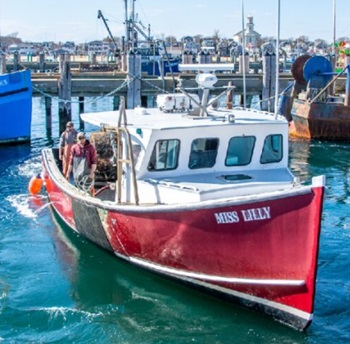 While overall the fishery seems stable, some lobstermen are seeing changes that have them worried about its future. Scientists are looking into what role the changing climate may be playing in those changes, but they don’t have definitive answers. “It’s horrible,” said Mike Rego, a lobsterman and owner of the F/V Miss Lilly who operates out of Provincetown. “Last year was the worst year I ever had.” Dana Pazolt, another Provincetown lobsterman who owns the F/V Black Sheep, said that the last four years have been slim for lobsters around the Outer Cape. “You’ve got to hunt for them,” he said. “I can’t tell you why that is.” The surface waters of the Gulf of Maine are warming at a rate of about one degree per decade, faster than 99 percent of the world’s oceans, according to the Gulf of Maine Research Institute. Meanwhile, in other areas, warming has already had an effect — it played a major role in causing the collapse of the lobster fishery in Long Island Sound in 1999. more, >>CICK TO READ<< 21:20
While overall the fishery seems stable, some lobstermen are seeing changes that have them worried about its future. Scientists are looking into what role the changing climate may be playing in those changes, but they don’t have definitive answers. “It’s horrible,” said Mike Rego, a lobsterman and owner of the F/V Miss Lilly who operates out of Provincetown. “Last year was the worst year I ever had.” Dana Pazolt, another Provincetown lobsterman who owns the F/V Black Sheep, said that the last four years have been slim for lobsters around the Outer Cape. “You’ve got to hunt for them,” he said. “I can’t tell you why that is.” The surface waters of the Gulf of Maine are warming at a rate of about one degree per decade, faster than 99 percent of the world’s oceans, according to the Gulf of Maine Research Institute. Meanwhile, in other areas, warming has already had an effect — it played a major role in causing the collapse of the lobster fishery in Long Island Sound in 1999. more, >>CICK TO READ<< 21:20
Alumnus John Genther ’23 saved man from waters in Long Island Sound
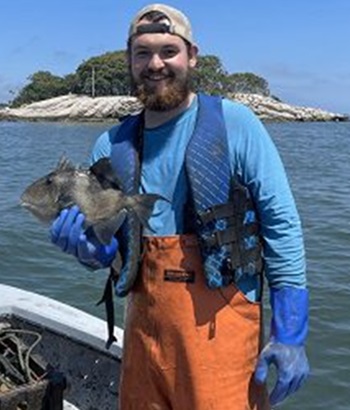 The Coast Guard awarded John Genther ’23 the Meritorious Public Service Award for saving a man’s life, just nine months after he graduated from Furman. It was late one November afternoon, and Genther, working as a commercial whelk fisherman, was hauling in traps or “pots” of the edible sea snails from the cold waters off Long Island Sound. Something blue, about a half mile away, caught his eye. Genther sped over to check out what appeared to be the underside of a small skiff. When he came alongside the overturned vessel, he saw an older man, not wearing a life jacket, barely holding on. The man could scarcely talk in the 55-degree water. Photos, more, >>click to read<< 06:40
The Coast Guard awarded John Genther ’23 the Meritorious Public Service Award for saving a man’s life, just nine months after he graduated from Furman. It was late one November afternoon, and Genther, working as a commercial whelk fisherman, was hauling in traps or “pots” of the edible sea snails from the cold waters off Long Island Sound. Something blue, about a half mile away, caught his eye. Genther sped over to check out what appeared to be the underside of a small skiff. When he came alongside the overturned vessel, he saw an older man, not wearing a life jacket, barely holding on. The man could scarcely talk in the 55-degree water. Photos, more, >>click to read<< 06:40
Rare species discovered on Long Island Sound as Maritime Aquarium pulls up abandoned lobster traps
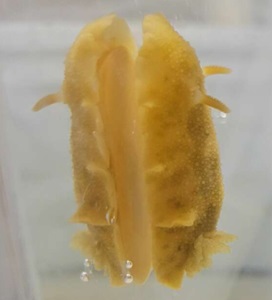 While recovering derelict and abandoned lobster traps from the Long Island Sound, The Maritime Aquarium at Norwalk and colleagues from Williams College and Project Oceanology came across a curious creature typically found across the pond. Known as the European nudibranch, Doris pseudoargus, the tiny yellow specimen was discovered in the Black Ledge region of the Sound, off the coast of Groton. This finding of Doris pseudoargus is the most southern discovery of the species in North America, according to the Maritime Aquarium. more, >>click to read<< 07:22
While recovering derelict and abandoned lobster traps from the Long Island Sound, The Maritime Aquarium at Norwalk and colleagues from Williams College and Project Oceanology came across a curious creature typically found across the pond. Known as the European nudibranch, Doris pseudoargus, the tiny yellow specimen was discovered in the Black Ledge region of the Sound, off the coast of Groton. This finding of Doris pseudoargus is the most southern discovery of the species in North America, according to the Maritime Aquarium. more, >>click to read<< 07:22
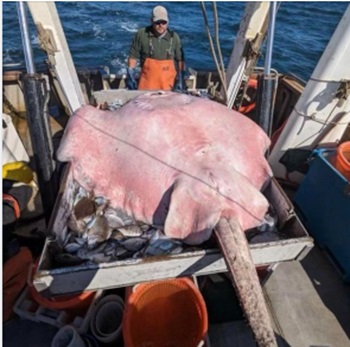
Connecticut fishermen catch a massive 400-pound Stingray
I don’t know about you, but in my world, stingrays aren’t 400 pounds. In the real world so to speak, it’s just as uncommon for your basic ray, too, so this catch in the Long Island Sound off the Connecticut coast is about as rare as you can get. Truly a ‘whoa’ moment. Our Long Island Sound Trawl Survey crew never knows what they might see on a given day out on the Sound – yesterday was a stand-out example. First, the crew trawled up a HUGE roughtail stingray (Bathytosia centroura): over 6 ft. long, 5 ft. wide, and an estimated 400 pounds! These gentle giants are found along the Atlantic coast from New England to Florida but are relatively rare in Long Island Sound. photos, >>click to read<< 07:30

New Regulations for Whelk and Horseshoe Crabs a Challenge for Commercial Fisheries
New state regulations intended to rebuild the whelk and horseshoe crab populations in the Long Island Sound could substantially limit the catches of local fisherman. Davis said that the department had done surveys trawling different areas of the Long Island Sound each year. Asked about the proposed regulations, Bob Guzzo, a commercial fisherman out of Stonington who catches whelk, said he thought the regulations were unnecessary, and that the department shouldn’t be involved in making them. He said that the whelks come and go in cycles. Guzzo said he believed the trawl surveys were inaccurate. >click to read< 14:16
CT DEEP Proposing New Rules For Lobster, Striped Bass, Others – The proposed regulatory changes are intended to address the “depleted state of these ecologically and economically important species in Long Island Sound,” according to DEEP officials. >click to read< 17:02
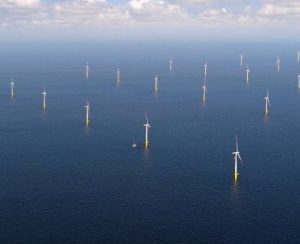
Energy giant to hold forum with fishermen over cross-Sound cable route on Wednesday
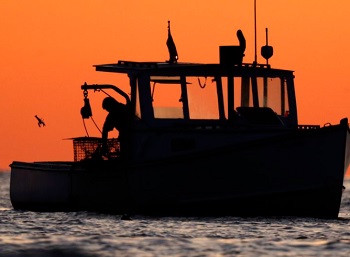
Lobster fisherman ruined financially by the Long Island Sound lobster die-off, escapes a prison sentence
Carlos Santos of Westbrook was described in federal court as a successful lobster fisherman until the total collapse in the Long Island Sound lobster population,,, Santos, 58, agreed to work off some of his debt by taking an offer from the owner of a Bridgeport marina to secretly sink boats that had been abandoned by the owners on marina property. Santos was charged with obstruction of navigable waters by sinking vessels The cause of the collapse of the lobster fishery, by some estimates, lobster landings fell 100% in 1999-2000, is still a subject of debate; explanations have run from an increase in water temperature to pesticide use. But there is no question that Santos and the 1,300 other Long Island Sound lobstermen were out of work. >click to read< 18:58
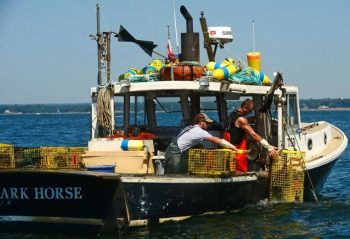
Toxic lobsters? – Long Island Sound dumping dispute nears tipping point
Connecticut says the new underwater dump site is needed to maintain the state’s economic development effort – including its lucrative submarine construction business at Electric Boat’s shipyard,,, New York says the site will be harmful to its ecology and tourism, and Connecticut could, and should, dump the material it dredges up somewhere else.,,, Toxic lobsters? Lobstering is still done in Long Island Sound, though there are far fewer lobsters than in the past. >click to read<10:08

Man charged with illegal lobster fishing in Greenwich, Stamford
A 72-year-old Stamford lobsterman has been arrested on hundreds of charges of illegally fishing from 94 lobster traps in the waters of Stamford and Greenwich at the end of last year. Eugene Karbowski, of Cedar Heights Drive, has been charged by the state Department of Energy and Environmental Protection with 94 counts of fishing untagged lobster parts,,, After his arraignment Tuesday before Judge Bruce Hudock at the Stamford courthouse, Karbowski’s defense attorney Bruce Koffsky said his client has been a lobsterman for decades, back when someone could make a living doing it. Koffsky said.,,, The great lobster die-off in the west end of Long Island Sound in 1997 has thrown the industry into a tailspin and reduced the number of lobstermen in the area from 311 in 1998 to 76 in 2016. >click to read<

We destroyed the L.I. Sound in 50 years: an eyewitness account
I grew up in the farmhouse where I now live, and the place that always gave me solace and comfort was the Long Island Sound. Every time I went, there was something more to discover and see — animals, birds and fish in huge numbers, everywhere.,,, Fast forward to now. Most of the species of fish, birds, lobster, oyster, clams and mussels are gone – rarely seen or heard of any more. The mussel banks that held the sand and helped against erosion and 95 percent of the eelgrass are gone. What’s left is a sewer of huge dead zones all summer and filth washed out of rivers and streams in Connecticut, chemicals washed off of yards, out of boats, down roads and flushed directly into the Sound when it rains, seeped into the water through old septic systems still being used — and overflow when the sewers in the western end of the Sound get a lot of rain or a pipe breaks. >click to read<12:34
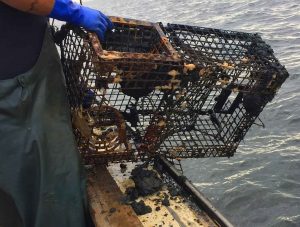
Ghost Fishing Off Long Island’s Coast
On the deck of the vessel Christine & Jennifer, a dozen tiny mud crabs, each smaller than a fingertip, scuttle out of a rusty lobster trap. The crabs move sideways, exploring the edges of these newly discovered surfaces with their long thin legs. Dan Kuehn, a research technician at the Cornell Cooperative Extension, a nonprofit agency affiliated with Cornell University, inspects the next lobster pot. Something is moving among the wires. He peers inside and says: “One undersized lobster.” Kuehn cradles the small lobster in his hands. This one is lucky — it’s still alive. >click to read<15:46
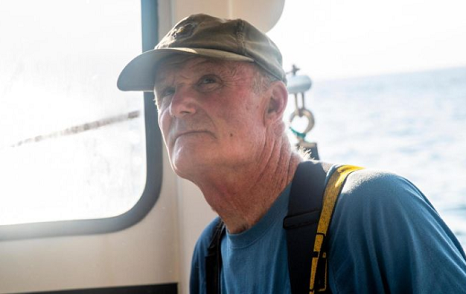
One man’s tale of lobstering 50 years in Long Island Sound – and simply loving it
John German hunted the delectable red crustacean for five decades. But as he motored his 40-foot boat, the Suzanne Marie, out of Mount Sinai Harbor at dawn Wednesday, he wasn’t looking for lobster. He was fishing for conch, a spiral-shelled mollusk beloved in Asia. The lobsters are nearly gone — and with them, the $100 million a year that they brought to Long Island. German, 71, is one of the last of the Long Island lobstermen, a group that once numbered as many as 700 but now counts only about a dozen members. The rough ride has been blamed on mostly warming waters and what folks call “the die-off,” the death of millions of lobsters in 1999 that lobstermen attribute to a concentration of mosquito insecticide that made its way into the sea. >click to read<07:04
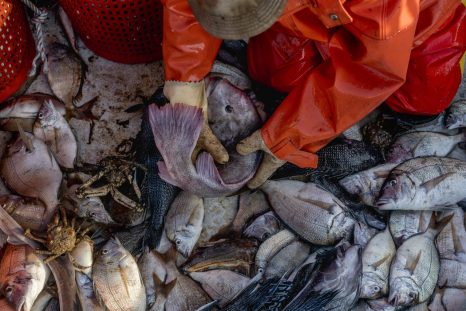
Blue Moon Fish – New York Couple Happy as Clams Selling Fish Direct to the Public
Alex and Stephanie Villani enjoy an enviable life. They live in a beautiful, secluded home with a big pool on Long Island’s idyllic North Fork. They set their own work hours and answer to no one. They spend two months every winter in the Florida Keys. And how do they pull it off? They fish for a living. Literally. Their income derives from their daily catch in the Long Island Sound, which they sell at farmers markets in Brooklyn and Manhattan. Unlike most local fishing operations that eke out a meager living selling their catch to wholesalers, the Villanis sell direct to the public—and command a lot more for their fish. >click to read<14:09
Maritime mystery in Connecticut! How did huge Pacific Dungeoness crabs get to Norwalk waters?
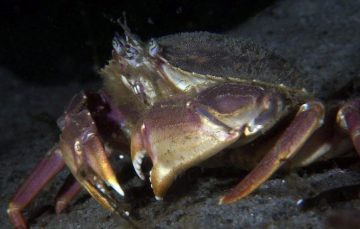 It’s not easy to stump the marine experts at the Maritime Aquarium. But that’s exactly what happened after fishermen from Copps Island Oysters hauled in four unusual, clawed critters last week on the south side of the Norwalk Islands. Dick Harris, marine specialist for Copps Island, said the fishermen were unsure of what the creatures were — and what to do with them — so they tossed three back and one brought to the aquarium. Aquarists identified the 2.5-pound crustacean as a male dungeness crab, native to the icy waters of the Pacific. “We’re doing our own research on this right now,” said Sandi Schaefer-Padgett, senior aquarist at the aquarium. “It’s not normal. We don’t often get things that no one’s seen before.” click here to read the story 07:36
It’s not easy to stump the marine experts at the Maritime Aquarium. But that’s exactly what happened after fishermen from Copps Island Oysters hauled in four unusual, clawed critters last week on the south side of the Norwalk Islands. Dick Harris, marine specialist for Copps Island, said the fishermen were unsure of what the creatures were — and what to do with them — so they tossed three back and one brought to the aquarium. Aquarists identified the 2.5-pound crustacean as a male dungeness crab, native to the icy waters of the Pacific. “We’re doing our own research on this right now,” said Sandi Schaefer-Padgett, senior aquarist at the aquarium. “It’s not normal. We don’t often get things that no one’s seen before.” click here to read the story 07:36
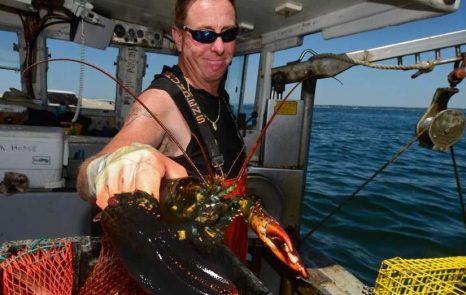
New restrictions seek to save Long Island Sound lobsters
A multistate fisheries commission is poised to slap more restrictions on Long Island Sound lobster fishing in another effort to stabilize the numbers of crustaceans. An arm of the Atlantic States Marine Fisheries Commission last week agreed to change the rules in hopes of slowing the continuing decline of lobster in southern New England. The numbers have been falling due to warmer water caused by climate change. “The goal is to preserve what there is,” said Mark Alexander, assistant fisheries manager for the state Department of Energy and Environmental Protection and a voting member on the fisheries commission. “It’s a disgrace,” said Roger Frate, a veteran Darien lobsterman, referring to the commission’s proposed restrictions. Mike Kalaman, a Norwalk lobsterman, said fishermen prefer no additional restrictions. Still, he said the proposed 5 percent egg production goal is better than some of the commission’s more stringent proposals. Click here to read the story 08:14

Proposals Aim To Restore Lobsters To Long Island Sound
A new interstate plan is being considered to try and halt the dramatic decline in lobster populations in Long Island Sound and southern New England waters, but experts warn none of these proposals may work in the face of global warming. The draft plan by the Atlantic States Marine Fisheries Commission includes possible changes in the size of lobsters allowed to be kept, reductions in the number of lobster traps allowed in the region, and additional lobster season closures. But a former president of the Connecticut Commercial Lobstermen’s Association, Nick Crismale of Branford, doubts the once-thriving lobster population in the Sound will ever recover. Increasingly warm waters in the Sound may have also resulted in an increase in fish species that prey on lobsters, like black sea bass, making any recovery more difficult, experts say. A number of Connecticut lobstermen believe the population plunge was triggered by the use of certain pesticides to kill mosquitoes carrying the West Nile Virus. Read the story here 15:21
Decision Will Allow Disposal Of Dredged Materials In Long Island Sound
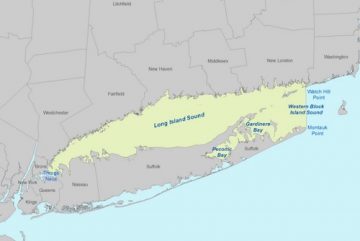 Federal environmental officials Friday dismissed protests from New York and issued a final ruling that will allow operation of an open-water site in eastern Long Island Sound for disposing of dredged materials from harbors and ports. The EPA decision drew applause from Connecticut’s congressional delegation and state officials who argued that halting dredge disposal in the eastern Sound would be a damaging economic blow for shoreline communities in this state. In its ruling, the EPA shifted the location of the new open water disposal site to place it entirely within Connecticut waters. New York officials and environmentalists fear the open water disposal of muck dredged primarily from Connecticut harbors could pollute the waters of the Sound and harm commercial and recreational fishing. Read the story here 12:34
Federal environmental officials Friday dismissed protests from New York and issued a final ruling that will allow operation of an open-water site in eastern Long Island Sound for disposing of dredged materials from harbors and ports. The EPA decision drew applause from Connecticut’s congressional delegation and state officials who argued that halting dredge disposal in the eastern Sound would be a damaging economic blow for shoreline communities in this state. In its ruling, the EPA shifted the location of the new open water disposal site to place it entirely within Connecticut waters. New York officials and environmentalists fear the open water disposal of muck dredged primarily from Connecticut harbors could pollute the waters of the Sound and harm commercial and recreational fishing. Read the story here 12:34
What are the clams economic impact on Greenwich?
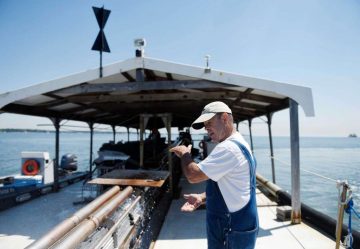 In his denim overalls and Simms fly fishing cap, Ed Stilwagen is where he can be found most days, checking in on his clamming boats and checking out the state of the water in Long Island Sound. “I always say the way to find clams is you go out there and you tell a clam joke. Then you hear ’em laughing, you go in and you get ’em,” Stilwagen said. Stilwagen is like a lot of people in Greenwich. He has two boats, a shiny black Cadillac and a lot of property. His boats, though, are for work and his property is mostly under water. The 4,000 acres he leases stretch about a mile into Long Island Sound. He is the largest clam harvester in Greenwich waters. “Since we been started here (in 2000), I calculate well over 300 million clams we’ve produced,” he said. Stilwagen’s crews are out on his pontoon-like clam boats sometimes seven days a week,,, Video, read the rest here and 31 photo’s. 17:57
In his denim overalls and Simms fly fishing cap, Ed Stilwagen is where he can be found most days, checking in on his clamming boats and checking out the state of the water in Long Island Sound. “I always say the way to find clams is you go out there and you tell a clam joke. Then you hear ’em laughing, you go in and you get ’em,” Stilwagen said. Stilwagen is like a lot of people in Greenwich. He has two boats, a shiny black Cadillac and a lot of property. His boats, though, are for work and his property is mostly under water. The 4,000 acres he leases stretch about a mile into Long Island Sound. He is the largest clam harvester in Greenwich waters. “Since we been started here (in 2000), I calculate well over 300 million clams we’ve produced,” he said. Stilwagen’s crews are out on his pontoon-like clam boats sometimes seven days a week,,, Video, read the rest here and 31 photo’s. 17:57
Long Island lobstermen oppose closures, question how regulators are making their decisions.
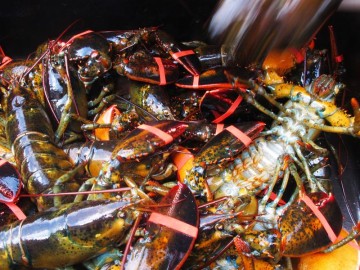 Long Island lobstermen, already straining under the weight of a seasonal closure of the Long Island Sound and sharply reduced lobster populations, face the potential for more closures as federal regulators work to rebuild a depleted stock. At a meeting of the Atlantic States Marine Fisheries Commission last week, the American Lobster Management Board agreed to review a series of new measures to address what they called the continuing decline in the Southern New England lobster fishery, which includes the . The fishery has been affected by environmental factors and fishing activity, the board said. Montauk lobsterman Al Schaffer said he and others saw a resurgence in the areas they fish around the Long Island Sound last year, though fishing is down thus far this spring. “There’s zero science,” he said, adding he strongly opposes any attempt to further restrict fishing. Read the story here 11:10
Long Island lobstermen, already straining under the weight of a seasonal closure of the Long Island Sound and sharply reduced lobster populations, face the potential for more closures as federal regulators work to rebuild a depleted stock. At a meeting of the Atlantic States Marine Fisheries Commission last week, the American Lobster Management Board agreed to review a series of new measures to address what they called the continuing decline in the Southern New England lobster fishery, which includes the . The fishery has been affected by environmental factors and fishing activity, the board said. Montauk lobsterman Al Schaffer said he and others saw a resurgence in the areas they fish around the Long Island Sound last year, though fishing is down thus far this spring. “There’s zero science,” he said, adding he strongly opposes any attempt to further restrict fishing. Read the story here 11:10
Roger Frate of Darien has a simple answer to improving the lobster stock in Long Island Sound.
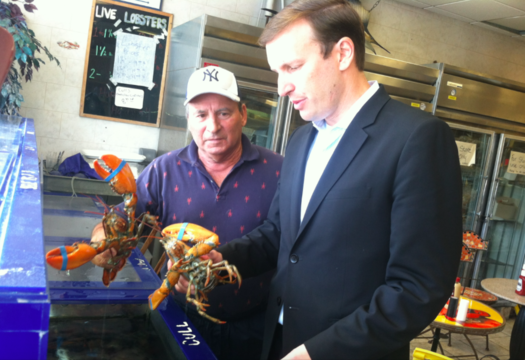 Frate said it was pesticide used to combat the West Nile Virus in 1998 and 1999 that decimated the Sound’s lobster population and sent it into a tailspin from which it has yet to recover. Connecticut banned the use of some pesticides, but New York hasn’t, he said. But Carlo said he’s noticed a rebound in the number of lobsters. “The lobsters right now are looking nice and healthy,” he said. “There’s been a huge improvement since 2012.” However, Frate said fishermen still believe pesticides are harming lobsters. Read the rest here 12:20
Frate said it was pesticide used to combat the West Nile Virus in 1998 and 1999 that decimated the Sound’s lobster population and sent it into a tailspin from which it has yet to recover. Connecticut banned the use of some pesticides, but New York hasn’t, he said. But Carlo said he’s noticed a rebound in the number of lobsters. “The lobsters right now are looking nice and healthy,” he said. “There’s been a huge improvement since 2012.” However, Frate said fishermen still believe pesticides are harming lobsters. Read the rest here 12:20
What is killing off the menhaden in Long Island Sound? ‘Whirling disease’ suspected
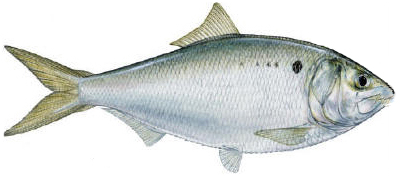 What is killing off the menhaden? The die-off has been reported at several locations, including in Long Island Sound along eastern Connecticut and in the estuaries of several area rivers. A viral “whirling disease” is believed to be the chief suspect in the die-off, said Mark Alexander, supervising fisheries biologist for the state Department of Energy and Environmental Protection. Read the rest here 10:08
What is killing off the menhaden? The die-off has been reported at several locations, including in Long Island Sound along eastern Connecticut and in the estuaries of several area rivers. A viral “whirling disease” is believed to be the chief suspect in the die-off, said Mark Alexander, supervising fisheries biologist for the state Department of Energy and Environmental Protection. Read the rest here 10:08
Plan advances to map Long Island Sound seabed
 A bill that would create the state’s first comprehensive plan for Long Island Sound — and provide ammunition to battle future unwanted uses — is moving through the General Assembly. “This is one of the few times I’ve seen an advisory committee that is balanced between those who are environmentally orientated, the fishing and commercial industry and the boating industry,” Aman said. Read the rest here 10:40
A bill that would create the state’s first comprehensive plan for Long Island Sound — and provide ammunition to battle future unwanted uses — is moving through the General Assembly. “This is one of the few times I’ve seen an advisory committee that is balanced between those who are environmentally orientated, the fishing and commercial industry and the boating industry,” Aman said. Read the rest here 10:40
Malloy sponsors ‘Blue Plan’ legislation to protect the future use of Long Island Sound
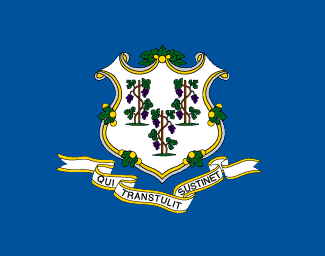 “With a Blue Plan, Connecticut can assure new uses of the Sound are compatible with traditional values and resources,” said Nathan Frohling, director of marine and coastal initiatives for the conservancy’s Connecticut office. “We will be able to better balance new uses, while protecting such things as commercial and recreational boating and fishing, the maritime beauty and environmental values that make the Sound such a desirable place.” Read the rest here 12:48
“With a Blue Plan, Connecticut can assure new uses of the Sound are compatible with traditional values and resources,” said Nathan Frohling, director of marine and coastal initiatives for the conservancy’s Connecticut office. “We will be able to better balance new uses, while protecting such things as commercial and recreational boating and fishing, the maritime beauty and environmental values that make the Sound such a desirable place.” Read the rest here 12:48
Is Millstone power plant killing lobsters in the Sound?
 Each day, some two billion gallons of water are pumped from Long Island Sound into the Millstone Power Station in Waterford, Conn. — that state’s only nuclear power plant- and used to help cool systems and support the station’s two operating reactors. Read the rest here 07:42
Each day, some two billion gallons of water are pumped from Long Island Sound into the Millstone Power Station in Waterford, Conn. — that state’s only nuclear power plant- and used to help cool systems and support the station’s two operating reactors. Read the rest here 07:42
Long Island Sound Lobsters Make Their Return – Lawmakers and Fishermen praise pesticide restriction
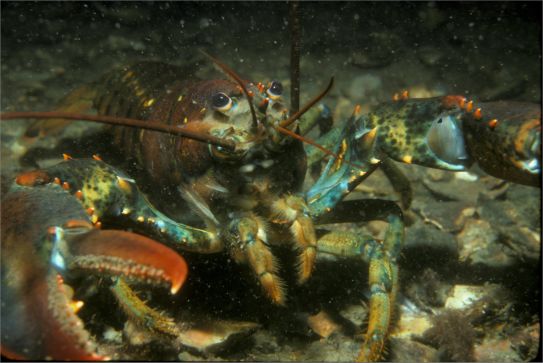 Connecticut’s Lobsters are making a comeback. Life-long lobster fisherman Mike Kalaman confirms the lobster catch from the Long Island Sound is more bountiful than we’ve seen in years. Video Read the rest here 21:54
Connecticut’s Lobsters are making a comeback. Life-long lobster fisherman Mike Kalaman confirms the lobster catch from the Long Island Sound is more bountiful than we’ve seen in years. Video Read the rest here 21:54
Fishing prohibited in Long Island Sound due to Bridgeport fire
A foamy substance with a red tint was observed in the water, so the Coast Guard will fly a helicopter this morning over the harbor and along the shoreline to determine its spread. As a precaution, all commercial and recreational fishing is prohibited from Norwalk to Milford while tests are completed, according to Coast Guard Capt. Ed Cubanski. Read the rest here 13:36
“The Great Heat.” Could Global Warming Turn The Sound Into Blue Crab Heaven?
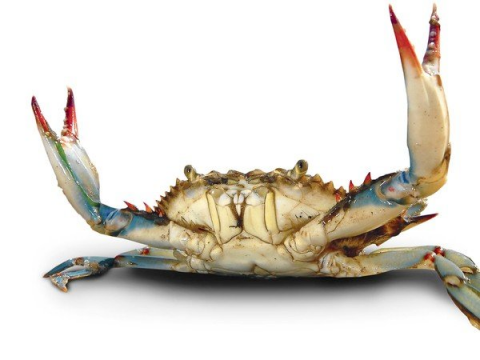 NEW HAVEN — — Global warming already has begun to transform Long Island Sound, according to many marine scientists, creating climate-change winners, like blue crabs, and losers, like lobsters. historical fishing and climate records According to those records, beginning in the late 1880s, southern New England experienced several decades of extraordinarily warm weather. Lobster populations plummeted (just as they did a century later). Blue crabs began to multiply, as did a number of other species better suited to warmer waters. “The Great Heat.” Read more here 07:48
NEW HAVEN — — Global warming already has begun to transform Long Island Sound, according to many marine scientists, creating climate-change winners, like blue crabs, and losers, like lobsters. historical fishing and climate records According to those records, beginning in the late 1880s, southern New England experienced several decades of extraordinarily warm weather. Lobster populations plummeted (just as they did a century later). Blue crabs began to multiply, as did a number of other species better suited to warmer waters. “The Great Heat.” Read more here 07:48
How Does a Four-Inch Eel Hurdle a 40-Foot Greenwich Dam?
 Baby eels are making their annual migration from Long Island Sound to rivers across Connecticut, but along the way, they’re encountering one persistent obstacle: river dams. Now, one man in Greenwich is working to make the eels’ journey a little easier. Read more here wnpr.org 12:27
Baby eels are making their annual migration from Long Island Sound to rivers across Connecticut, but along the way, they’re encountering one persistent obstacle: river dams. Now, one man in Greenwich is working to make the eels’ journey a little easier. Read more here wnpr.org 12:27


































